Dark-eyed Junco (Snowbird) | Field Guide to Nesting, Song & Winter Range
By early October, the first Dark-eyed Juncos drift back to my backyard feeders, a hands-on reminder that winter is on the way.
First There Were 5 Species
It was first thought that there were five different species of this bird.
Today, they are all classified as the Dark-eyed Junco with 5 subspecies.
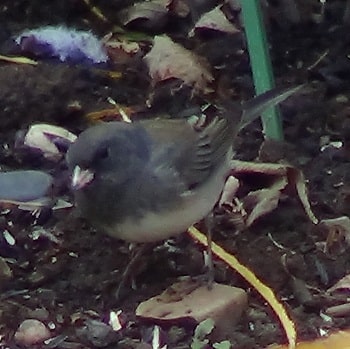
- • The eastern "Slate-colored" race is uniformly dark gray or brownish gray depending on whether it is male or female.
- • The western "Oregon" race has a black (male) or gray (female) hood and a brown back. Often called "Black Hooded".
- • The western "Pink-sided" race has a gray head and pinkish sides.
- • The "Gray-headed" race of the southern Rockies and Southwest is light gray with a reddish-brown back.
- • The "White-winged" race of north-central states has white on the tail and usually white wing bars.
Dark-eyed Junco Song - Call
Song: The male song is a simple, musical trill. It's a series of rapid, high-pitched notes on the same pitch, lasting about 1-2 seconds.
The trill can vary slightly depending on the bird's location, but it's generally a fast, evenly spaced series of metallic-sounding notes.
Mating Habits of Juncos
Juncos are monogamous (one male to one female) and will defend their territory during the nesting and breeding season.
Where their ranges overlap, the different races interbreed freely and can be difficult to distinquish between subspecies.
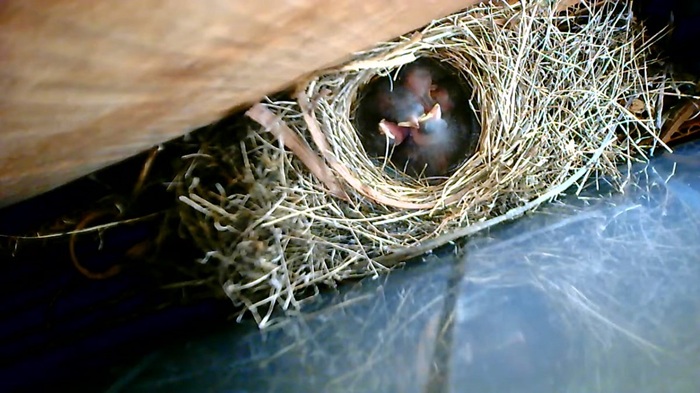
The mating rituals are similar to other birds. A male will approach a female and bow and do a wing quiver.
He also fans his tail in a display to attract the female.
Chases occur and eventually, the female will pick the male she decides is best.
Males are very aggressive in defending their territories from other males.
Do They Mate for Life?
Studies have shown that more than 82 percent mate with the last seasons partner if they both return to the previous nesting territory.
So, you could say most pairs of Juncos mate for life, just not in the same way as Bald Eagles mate for life.
Nesting Habits: Breeding Season
The Dark-eyed Junco begins its breeding season in April and goes through to the end of June. Exceptions exist, due to predation of first nesting attempts.
Nest Building
The female bird builds and places her nest in a variety of places. On the ground, under a fallen tree, in hanging baskets, and even in an old Robin nest.
The nest is cup-shaped and built using grasses, moss, and twigs. She lines the inside with finer grasses, rootlets, and hair.
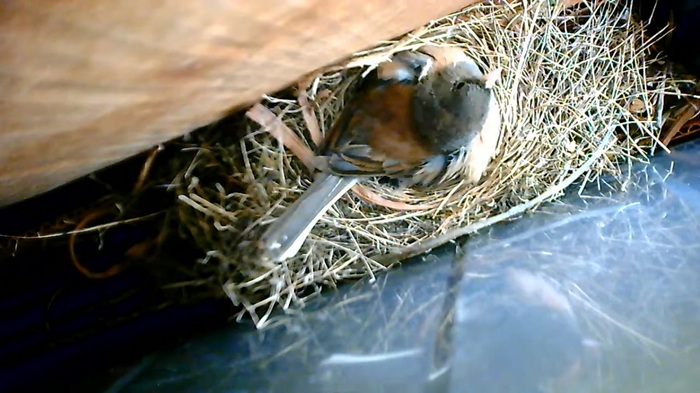
Nests of the Dark-eye Junco experience high predation since they often nest on the ground.
Egg Laying and Incubation
The female lays 3 to 6 gray or pale bluish eggs with dark blotches. Eggs can vary quite a lot.
For most, incubation begins the night before the last egg is laid.
The female incubates the eggs for 12 to 13 days and the young will leave the nest in 10 to 13 days after hatching.
| Dark-eyed Junco Nesting Timeline | |
|---|---|
| Eggs | 3 - 6 |
| Incubation | 12 - 13 days |
| Nestling Phase | 10 - 13 days |
| Broods | 1 - 2 |
Nest may be used for second broods. 1 - 2 broods are raised each season.
Why do I only see Dark-eyed Juncos in Winter?
The reason you don't see them in summer is because they retreat northward each spring to their breeding territories, while others may be year-round residents that retreat into deep woodlands during breeding season.
Over most areas, dark-eyed juncos are present only from early October to mid-April, making them a reliable sign that winter has arrived.
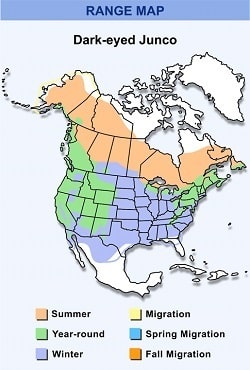
Most of us east of the Rockies never get to see these birds during the breeding season as they move much farther North into Canada.
Juncos also breed at higher altitudes in the Rockies and can be found year-round in the west.
Feeding Habits: What is the Dark-eyed Juncos Diet
Dark-eyed Juncos feed mostly on the ground, eating weed and grass seeds in the wild. In summer, they eat seeds and insects.
Attracting these black-eyed birds to your feeders is as easy as scattering some finely cracked corn or millet seed on a tray feeder.
A ground tray feeder is the best type for attracting juncos. It keeps the seed dry while being where they feed.
Bird seed tossed on the ground can gather moisture, causing it to spoil. This can be harmful to any bird that eats the spoiled seed.
Add a Heated Birdbath to keep water available for birds all winter long.
The best part is, you can keep using it year-round, just unplug it once the weather warms up.
Video of Slate-colored Junco Feeding
Check out our Bird Seed Chart to see all of what these birds will eat.
Interesting Behavior
Junco birds have an interesting wintering behavior. Males will winter farther North than females. Younger males will winter farther north than older males.
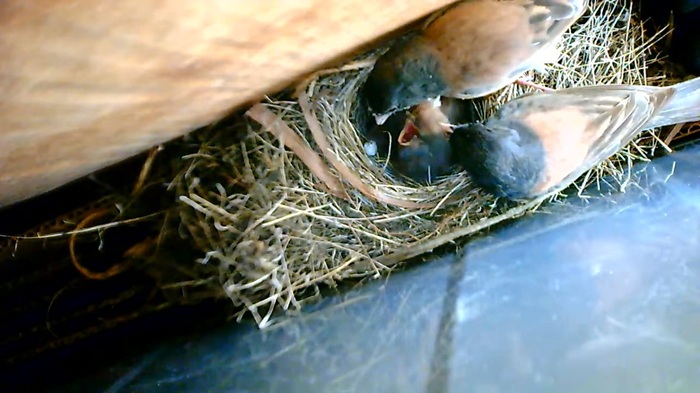
The understanding of this behavior is that young males winter closer to the breeding grounds to claim territory before mature males arrive.
Since females do not claim territory, they can winter farther south.
Fun Fact about Junco's
Not only is the Dark-eyed Junco common at bird feeders in winter, but they are also the most common bird in America. Estimates are over 600 million.
More About Juncos:






